Are you unsure about how much Chlorine to add to a pool? Every pool owner knows the various activities that go into pool management. You might have to use pool cleaners, filters, covers, and more.
Chemical treatment, mostly with pool chlorine, is one of the essential aspects. However, adding the ideal amount of Chlorine at the right time is more critical for the safety of the pool and its users.
Most new pool owners have little idea about pool chemicals and the correct application. In this article, you will get to know how much Chlorine to add to your pool.
If you are in a rush, find the quick answer in this section.
Table of Contents
Why Is Chlorine Necessary for Pools?
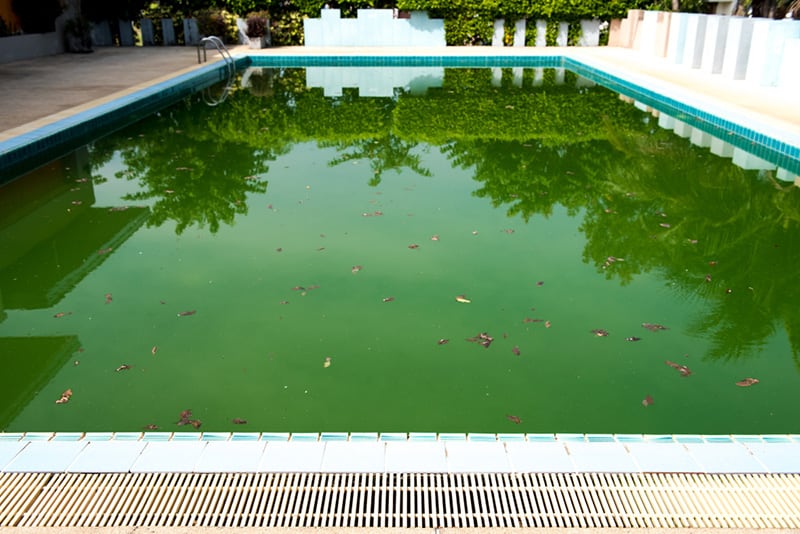
Most experienced pool owners understand that Chlorine is critical to ensuring a healthy swimming pool. It is beyond having a pool that is crystal clear. You still need pool chlorine, a chemical that may come as tablets or liquid.
Regardless of its state, it creates an unfavorable (hypochlorous acid) environment capable of killing bacteria in the pool water. It is more of an inhibitory substance for foreign biological objects.
Nevertheless, the right amount is crucial during application. A little too high may be harmful to the pool users. If it is low, harmful microorganisms may thrive.
How to Assess Pool Chlorine Level?
Having a crystal-clear pool is compulsory, but you also want to ensure that pool chemicals are in the correct quantity. Before commencing chemical treatment, the first step is to assess the current pool chlorine level.
The standard items used to assess chlorine levels are test strips and kits.
1. Test Strips
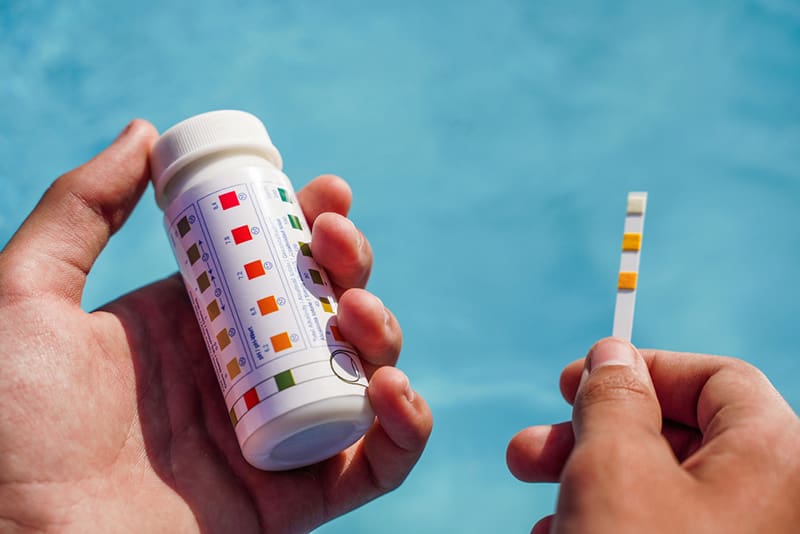
Test strips are probably more relatable to most new pool owners because of their simplicity. They have direct contact with the pool water and feature a color chart for comparing results.
The instructions are often written clearly on them. However, the strips are sensitive and will change color when dipped into a liquid. The chart contains various colors that translate to different chemical concentrations in the water.
Comparing the final color of the strip with the chart gives you an idea of the chemical (Chlorine) concentration. Each color represents the concentration of the chemical in parts per million (ppm).
2. Test Kits
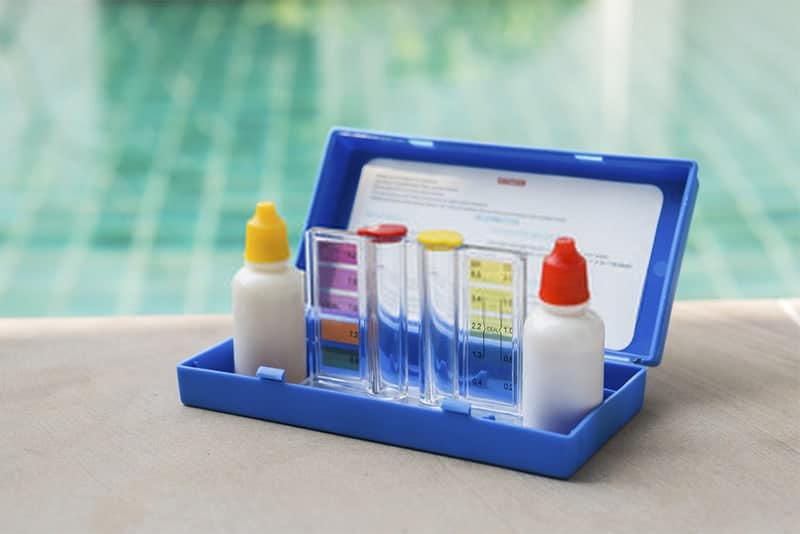
For better accuracy, a test kit is the best option to consider. Pool owners can test large water samples for comprehensive results of the pool water. Test kits can measure various parameters besides Chlorine.
A typical test kit comprises reagents, a test tube, a saturation index tool, and a user guide. Therefore, they are often more challenging to deal with and may require constant checking of the guide.
As long as you follow the guide, the results will be accurate, and you will have a clear idea of the exact amount of Chlorine to add.
3. Electric Testers
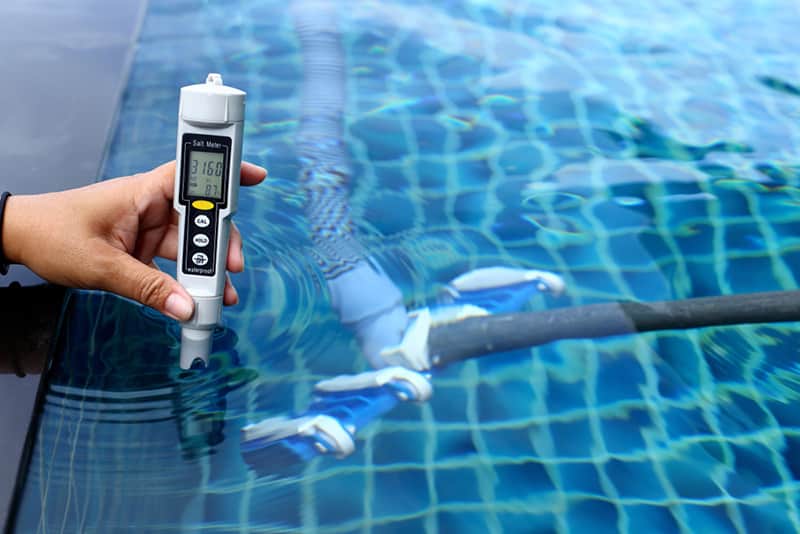
An electric tester is your best bet if you want a reusable option. They are portable and easy to use. You do not need reagents or charts; however, they are the least accurate of the three testing methods.
Different Ways You Can Add Chlorine Into Your Pool
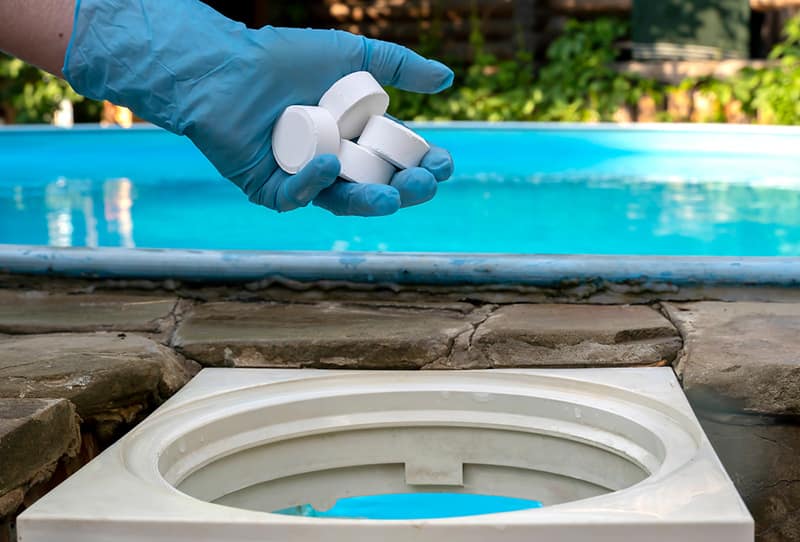
There are various ways available to pool owners to add Chlorine to their pools. Most times, it depends on the condition of the pool. A particular method is more effective when the pool is in dire need of chlorination.
The common methods are:
● Chlorine tablets.
● Chlorine shocks.
● Liquid Chlorine.
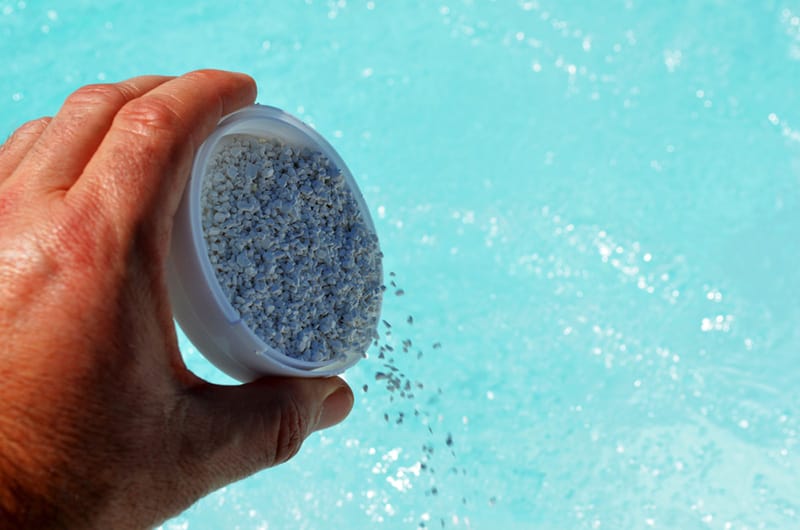
For fast action, liquid Chlorine and Chlorine shocks are recommended. Chlorine tablets are the best and easiest option when you need Chlorine to be released slowly into the pool. They can be added using floating dispensers, automatic chlorinators, or skimmers.
The standard liquid Chlorine in use is Calcium hypochlorite. Most pool chlorine tablets and shocks are sodium hypochlorite.
How Much Chlorine to Add to a Pool
Determining how much Chlorine to add to your pool can be tricky, even if it is a new pool. The proper concentration of Chlorine must be in the pool at all times to ensure swimmers’ safety.
Although the process is not tedious, it is possible to make mistakes, and you need to be careful. The following steps will put you through how to determine the quality of Chlorine to add to your pool.
Step 1: Measure the Chlorine concentration of the pool water
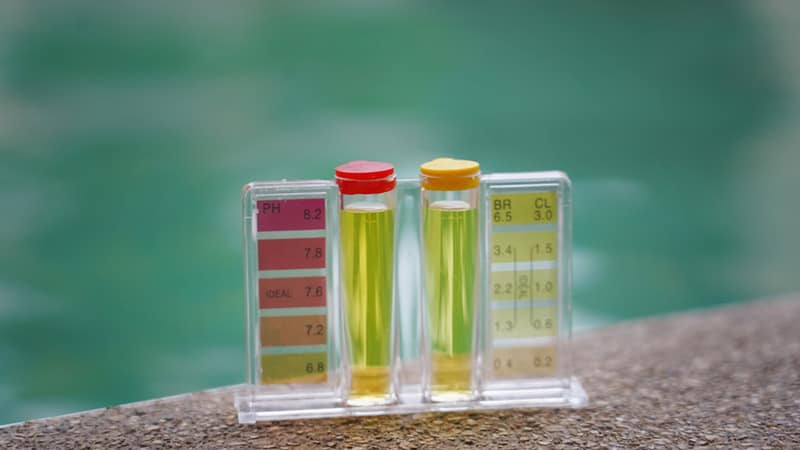
Before adding Chlorine to your pool, the first thing to do is check the water’s concentration. You must not rush to pour Chlorine into the water. You need a test kit, test strip, or an electronic tester for this step.
Often, the results are calibrated to parts per million (ppm). Therefore, your readings will be in ppm (e.g., 5ppm). There is a standard range regarded as being effective in controlling germs and safe for swimmers.
Each testing method has various instructions written by its manufacturer. However, the process is similar for different products in the same testing method.
Testing with a test strip
For a test strip, take a test strip and dip it into the pool water for a few seconds. You may decide to take some water from the pool. Remove the strip and blot dry with a paper towel. Compare the color of the strip with the color chart.
Testing with a test kit
For a test kit, collect the required quantity of pool water sample (preferably 15 inches below the water) into the test tube. Add the specified drops of the testing reagent for Chlorine and cover the test tube.
Shake vigorously for a few seconds and compare the resulting solution with the kit’s color chart. Some kits allow you to test free and residual Chlorine in a pool.
Testing with an electric tester
An electric tester is the easiest to use but the least accurate. Take a water sample (preferably 20 inches below the water) into a bowl. Dip the tester into the liquid and test. You should get your result in a few minutes.
Ideally, your pool should have a Chlorine concentration between one ppm and three ppm. Harmful microorganisms will not survive within this range while you harm swimmers.
If your pool exceeds four ppm, you might need to stay away from the pool water for a few days. If you need to swim urgently, you must dilute the pool water with fresh water.
If the result is below one ppm, your pool is neither safe for swimming. Then, you must add some chlorine to your pool water. Please take note of your readings as you will need them in the next step.
Step 2: Determine your pool size
To determine the amount of Chlorine to add, you need to know the volume of water in your pool. All you need is some elementary mathematics to figure it out.
Get a measuring tape and measure the pool’s length, width, and water depth. Afterward, determine the volume of your pool with the following formula.
[Pool Length in Feet] x [Pool Width in Feet] x [Pool Depth in Feet] x 7.5 = [Volume of Your Pool in Gallons]
E.g., if your pool is 25-foot long, 15-foot wide, with a water depth of 10 feet, you should have a volume of (25 x 15 x 10 x 7.5) 28,125 gallons of water.
Step 3: Choose the method of application
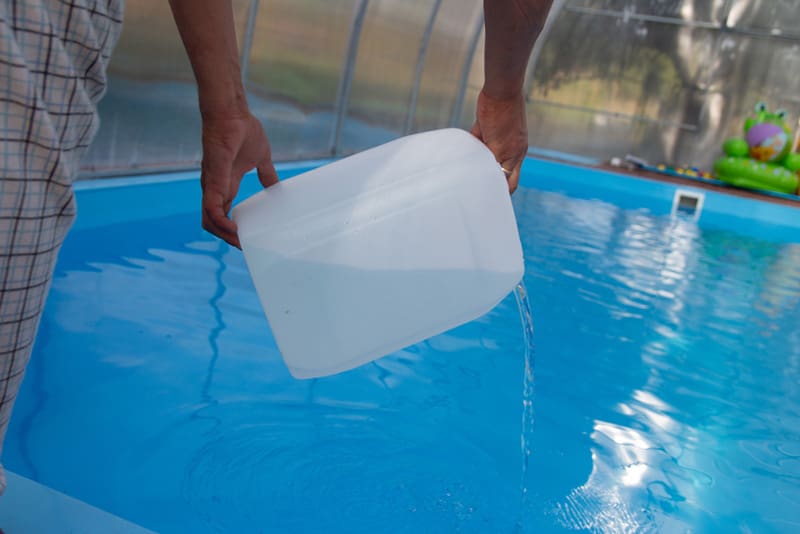
As discussed in the previous section, there are three ways to add pool chlorine. Liquid Chlorine is the least common and should be handled with care.
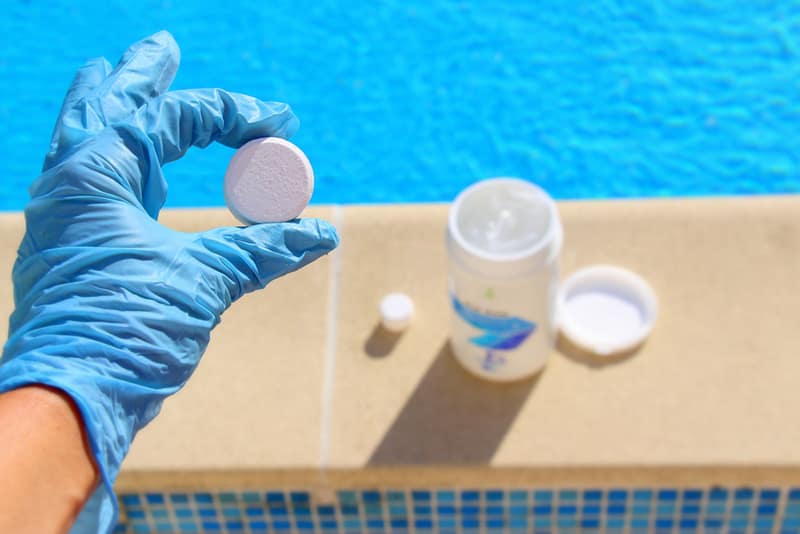
Most pool owners use chlorine tablets to maintain concentration levels and shocks for weekly or instant results. If your pool needs urgent attention, you should consider Chlorine pool shocks.
Pool chlorine tablets come in different sizes, but the common ones are the 1-inch and 3-inch sizes.
Step 4: Determine the quantity of Chlorine to use
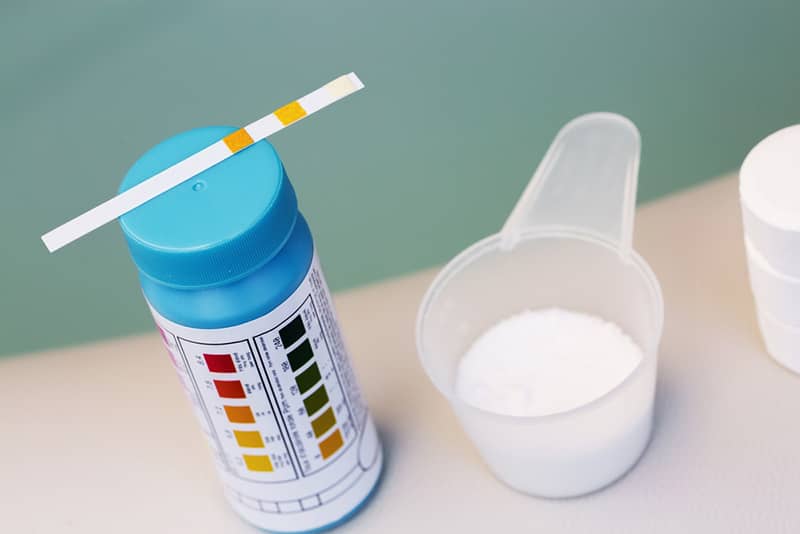
Any pool or spa with water volume below 5,000 gallons requires a one-inch tablet. A single one-inch pool chlorine tablet is recommended for 5,000 gallons.
The one-inch chlorine tab could be anywhere around 0.5 to 0.7 ounces, while the bigger three-inch could be between 6 and 8 ounces. Ensure you check and confirm before applying.
To raise your pool chlorine by one ppm, you need to do another round of basic mathematics. The following formula will help you determine how many chlorine tablets or shocks to add.
[Volume of Pool Water in Gallons] x [Recommended 0.00013 Ounces of Chlorine per PPM] = [Ounces of Chlorine to Add]
E.g., 28,125 gallons of water x 0.00013 ounces of Chlorine per PPM = 3.65 ounces of Chlorine (tablets or shock).
However, if you want to raise your pool chlorine concentrate by more than one ppm, multiply the difference between the range.
E.g., to raise from 0.5 ppm to 2.5 ppm, multiply (2.5 – 0.5 = 2) ppm by 3.65 ounces of Chlorine. That is about 7.3 ounces of Chlorine (tablets or shock).
If you prefer liquid Chlorine, it is best to use an automatic chlorine dispenser. However, if you have to add it by hand, do not exceed half a liter per 13,300 gallons of water.
FAQs
How Does Chlorine Ensure Safe Swimming?
Yes. Chlorine effectively ensures safe swimming, provided you use it correctly. Chlorine kills dangerous microorganisms in the pool water. They are more effective if you have a good pool filter to remove dead foreign objects.
How Often Do You Need to Top up the Chlorine Levels?
It depends on various factors, such as the frequency of pool use and ambient temperatures. Pools with many swimmers need more attention. In warmer seasons, pools need extra care as well.
Nevertheless, you should test your pool at least twice a week. Do not guess or wait till things turn terrible. Ensure that the concentration is always between one ppm and three ppm.
What if My Chlorine Levels Are Too High?
There are different ways to manage excess chlorine levels. Remove any chlorine dispenser and chlorinator temporarily. Then, expose the pool water to sunlight for some (3 to 6) days depending on the concentration.
Ensure you keep testing to ensure chlorine levels do not go below 1ppm. If you want to swim urgently, you can dilute the water with fresh water or use chlorine remover chemicals. Either option costs some money.
When Should You Carry Out Chlorine Shock Treatment?
Chlorine shock treatment should not be done all the time. Only perform this treatment for a new pool, during winter, after an extended no-use period, or after a busy swimming period. However, ensure you test before adding pool chemicals.
Conclusion
Knowing how much Chlorine to add to the pool is crucial. It protects your pool users and the pool and keeps dangerous microbes in the water. Furthermore, you do not have to require the services of an expert, saving you some cash.
Now, you know that testing your pool before and after every chlorine application is compulsory. You should also note that the standard range for chlorine concentration should never be less than one ppm or exceed three ppm.
By sharing this article, you can help other pool owners learn the recommended chlorine concentration and its application. Kindly use the social media links on the page.
Do you have questions and comments regarding the pool chlorine application? Do not hesitate to reach me using the comment section below.

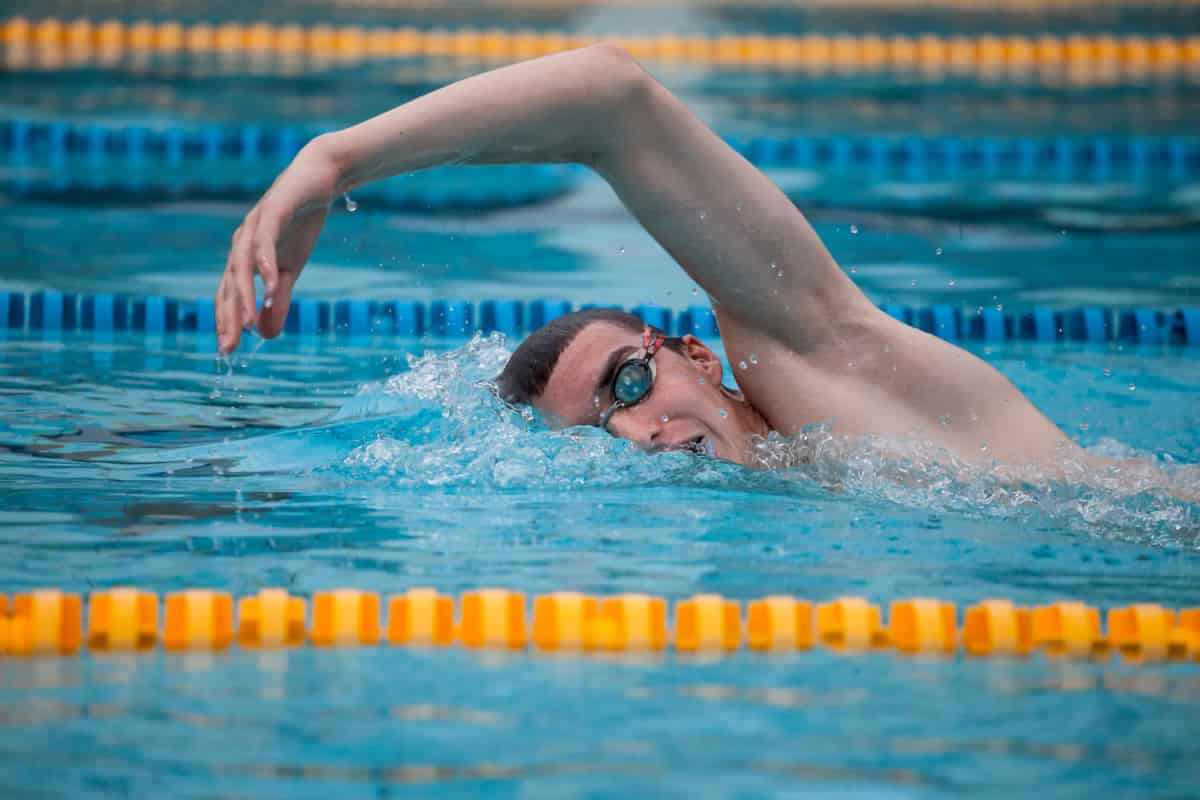
Leave a Reply